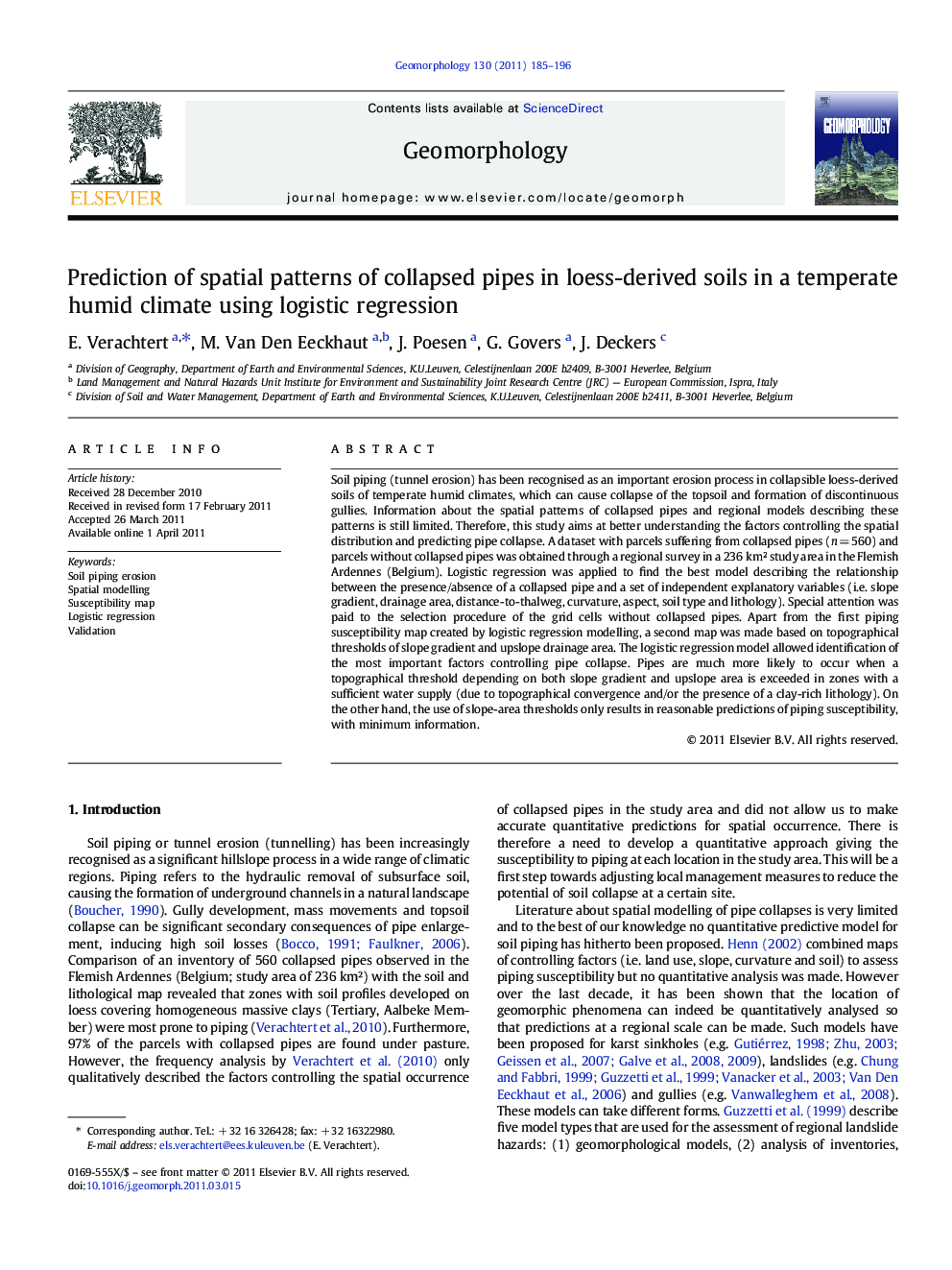| Article ID | Journal | Published Year | Pages | File Type |
|---|---|---|---|---|
| 6432998 | Geomorphology | 2011 | 12 Pages |
Soil piping (tunnel erosion) has been recognised as an important erosion process in collapsible loess-derived soils of temperate humid climates, which can cause collapse of the topsoil and formation of discontinuous gullies. Information about the spatial patterns of collapsed pipes and regional models describing these patterns is still limited. Therefore, this study aims at better understanding the factors controlling the spatial distribution and predicting pipe collapse. A dataset with parcels suffering from collapsed pipes (n = 560) and parcels without collapsed pipes was obtained through a regional survey in a 236 km² study area in the Flemish Ardennes (Belgium). Logistic regression was applied to find the best model describing the relationship between the presence/absence of a collapsed pipe and a set of independent explanatory variables (i.e. slope gradient, drainage area, distance-to-thalweg, curvature, aspect, soil type and lithology). Special attention was paid to the selection procedure of the grid cells without collapsed pipes. Apart from the first piping susceptibility map created by logistic regression modelling, a second map was made based on topographical thresholds of slope gradient and upslope drainage area. The logistic regression model allowed identification of the most important factors controlling pipe collapse. Pipes are much more likely to occur when a topographical threshold depending on both slope gradient and upslope area is exceeded in zones with a sufficient water supply (due to topographical convergence and/or the presence of a clay-rich lithology). On the other hand, the use of slope-area thresholds only results in reasonable predictions of piping susceptibility, with minimum information.
⺠A susceptibility map for pipe collapse was created using logistic regression (LR). ⺠LR model allowed identification of most important factors controlling pipe collapse. ⺠Pipes occur above a topographic threshold in zones with sufficient water supply. ⺠Using only slope-area thresholds also results in reasonable predictions of piping.
